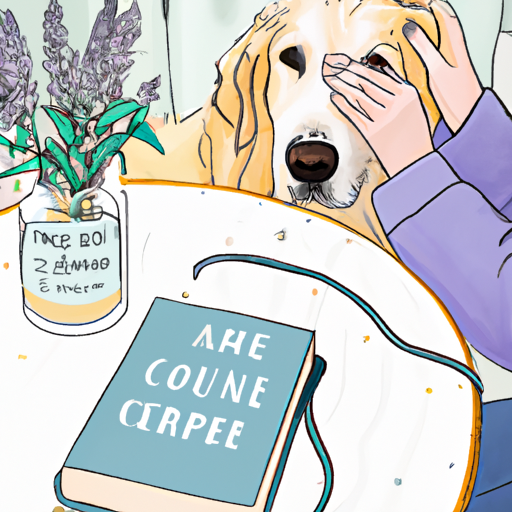Introduction
Anxiety in dogs, just like in humans, is a serious concern. It could lead to destructive behaviors, self-harm, and a poor quality of life for your furry friend. But don’t worry, as a caregiver, you’re already on the right path just by seeking to understand and help your dog overcome this condition. This article will provide you with all the information you need to help your dog navigate through this challenging period.
Understanding the Signs of Anxiety in Dogs
Your first step in helping your dog is to recognize the signs of anxiety. Dogs can’t tell us what they are feeling, so we must understand their physical and behavioral cues. Here are some common signs:
- Excessive barking or howling
- Pacing and restlessness
- Destructive behavior like chewing and digging
- Aggression towards other animals or people
- Excessive drooling or panting
Implementing a Routine
Dogs thrive on routine. A structured day can provide comfort and reduce anxiety. Here are some key elements to consider when establishing a routine:
-
Mealtimes: Set specific times for feeding your dog. This creates a sense of order and predictability.
-
Exercise: Regular physical activity helps to burn off nervous energy. Try to walk your dog at the same time each day.
-
Playtime: Allocate time each day for play. This not only provides physical exercise but also mental stimulation.
-
Quiet time: Just like humans, dogs need downtime. Provide a quiet, safe space where your dog can retreat and rest.
| Routine Elements | Timing |
|---|---|
| Mealtimes | Morning and Evening |
| Exercise | Morning and Evening |
| Playtime | Afternoon |
| Quiet time | Night |
Engaging in Positive Reinforcement Training
Positive reinforcement training is a powerful tool in managing and reducing anxiety. It involves rewarding your dog for desired behavior, which encourages them to repeat it. Here’s how to get started:
- Identify a behavior you want to encourage, like sitting quietly or responding to a command.
- Reward your dog immediately after they exhibit the desired behavior. Rewards could include treats, praise, or petting.
- Be consistent with your rewards. The more frequently your dog is rewarded for the behavior, the more likely they are to repeat it.
Seeking Professional Help
If you’ve tried implementing a routine and positive reinforcement training, but your dog’s anxiety persists, it may be time to seek help from a professional. A veterinarian or a certified animal behaviorist can provide further guidance and treatment options, which may include medication or more specialized behavior modification techniques.
FAQs
Q: Can certain breeds be more prone to anxiety?
A: Yes, some breeds are more prone to anxiety than others due to their genetic makeup and breed characteristics. However, anxiety can affect any breed of dog.
Q: Can anxiety in dogs be completely cured?
A: While some dogs may overcome their anxiety with proper management and treatment, others may continue to struggle with it throughout their lives. The goal is to reduce anxiety to a manageable level to improve the dog’s quality of life.
Q: How quickly can I expect to see improvements in my dog’s anxiety?
A: The timeline for improvement varies widely. Some dogs may show improvements within a few weeks, while others may take several months or more. Patience and consistency are key.
Q: How can I prevent anxiety in my dog?
A: Early socialization, consistent training, a stable routine, and a safe, loving environment can all help prevent the development of anxiety in dogs.
Remember, it’s important to approach your dog’s anxiety with empathy and patience. It’s a challenging condition, but with your love and dedication, your furry friend can navigate through it successfully.



